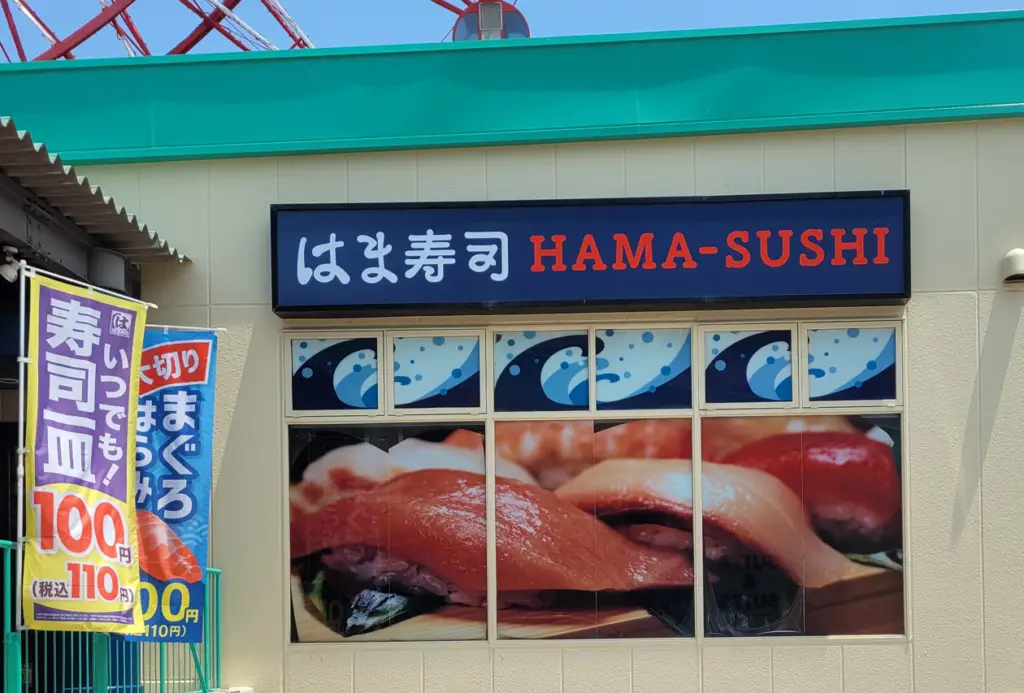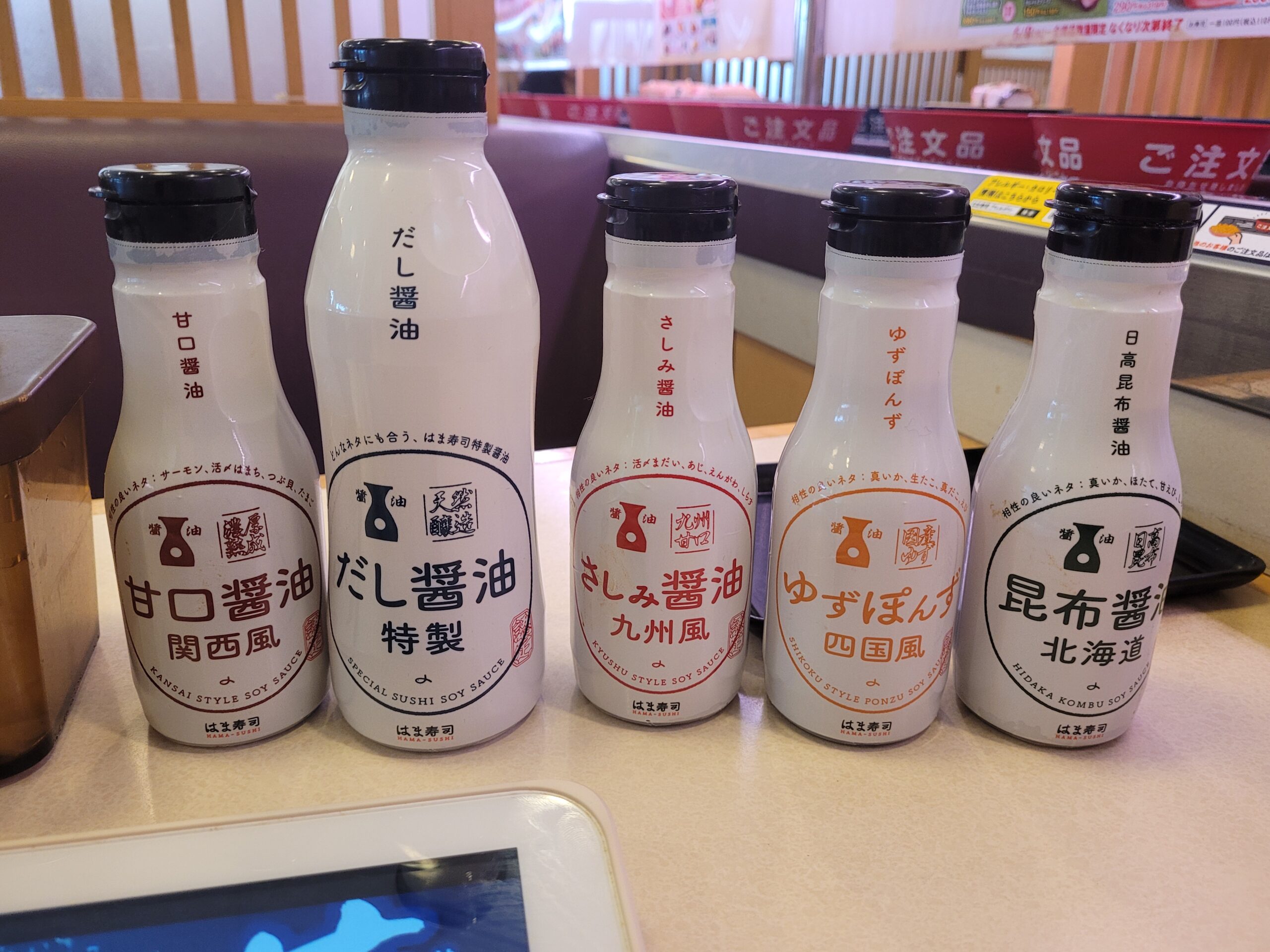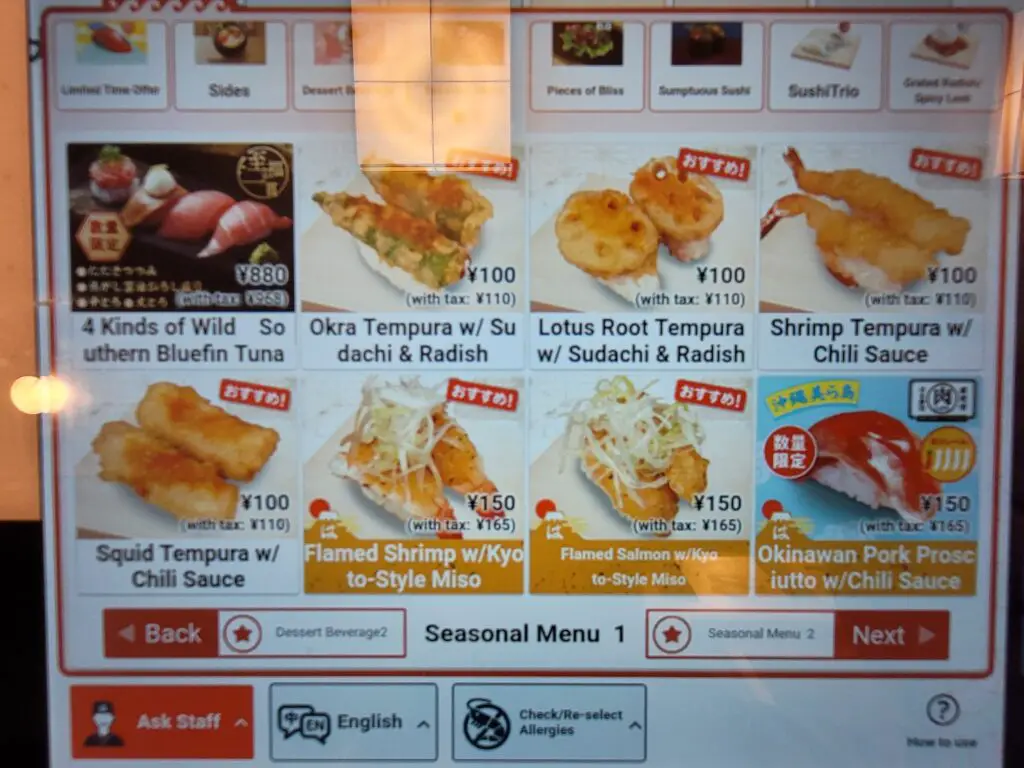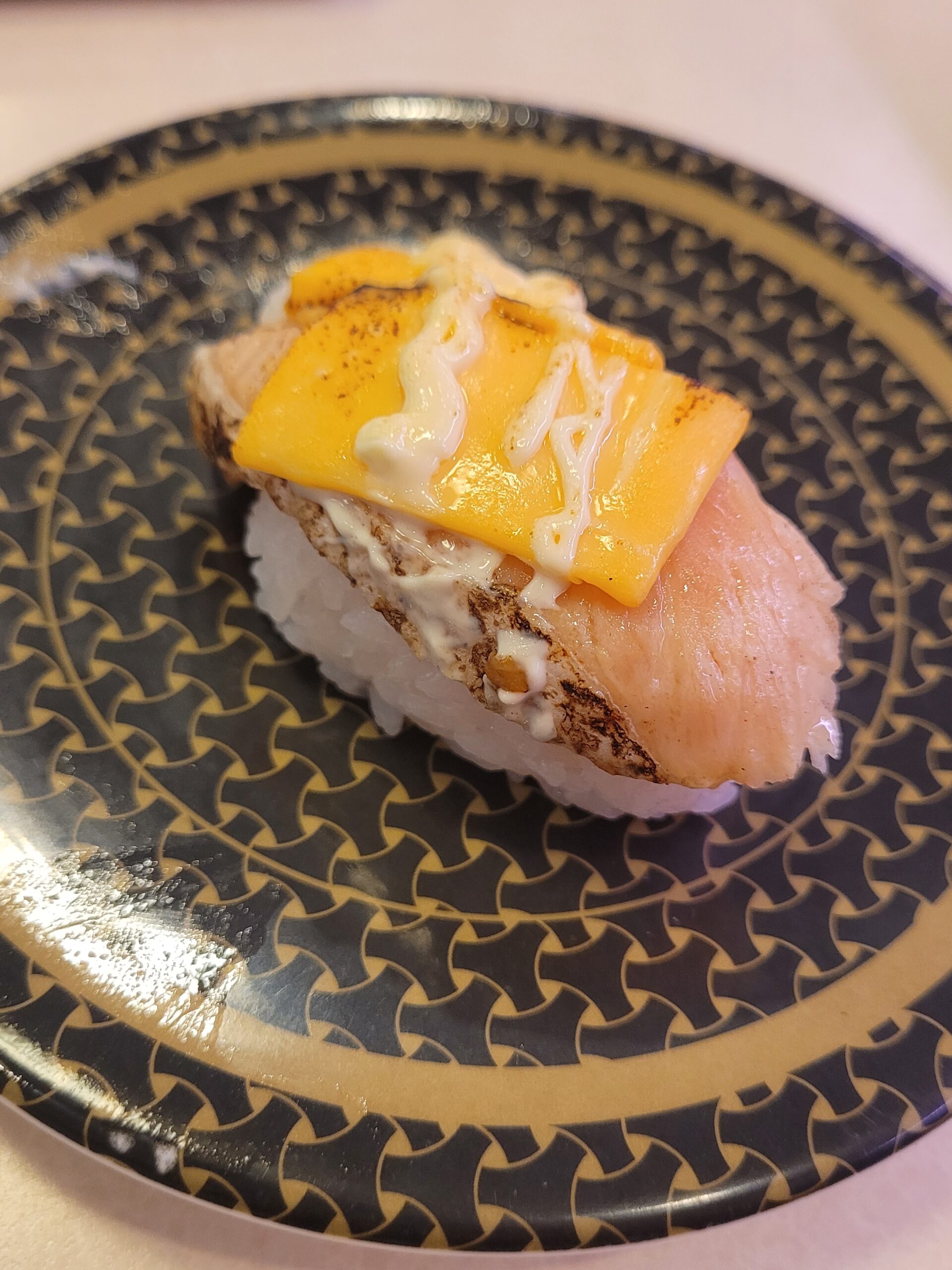If Sushiro and Kura are the Federer and Nadal of the conveyor belt sushi world, then Hama Sushi is the Djokovic of the trio!

Literally named after the beach (hama = beach), Hama Sushi can be spotted from a mile away with its ocean wave theme and potent blue colors.
During my stay in Kitakyushu, I decided to try the Hama Sushi establishment down the road at Kokura’s ChaCha Town for a first-time experience.
A Superior Setup?

On the surface, Hama Sushi seemed to have a similar layout to popular sushi chains Sushiro and Kura Sushi.
However, it’s the small subtleties that make the biggest impact, and I noticed a couple of differences when I sat down.
Firstly, I was pleased to see the condiments such as wasabi, chili, and seasonings easily accessible from my table.
Sushiro and Kura tend to have these specific condiments on rotation on the conveyor belt, making it more difficult and time-consuming to get a hold of them.
I also liked the container holding the matcha green tea powder, as it comprised an easy-pour shaker that prevents messes that commonly occur with the spoon method.
Condiments Galore

Another cool difference with Hama Sushi is the wide selection of different soy sauce options for your sushi. You will typically find one or two options at standard sushi train restaurants, but Hama Sushi provides a full selection of five different types!
Soy sauce varieties include Kansai style, Kyushu style, Shikoku style ponzu, Hidaka kombu, and “special” sushi soy sauce.
Naturally, I had to try them all, but admittedly, I found little difference between them (chefs will probably kill me for saying that). Perhaps the one that stood out the most for me was the Shikoku style ponzu soy sauce, as this one is made with a citrus-based flavor.
Top Quality – Lowest Prices

In all honesty, Hama Sushi had a level of quality that I would put over Sushiro and Kura.
Perhaps I simply got lucky with my experience, but I found the cuts of fish to be thicker, even for the cheapest 100 yen dishes!
The fish also tasted fresher as far as I could tell, and the rice seemed to be cooked fresh too, having a little bit of warmth to it.
One of the things that really struck me with Hama Sushi was the sheer variety that their menu offered, including unique items such as duck udon lotus root tempura.
The variety of tuna sashimi was also quite impressive, offering up trio plates of different types of tuna.
This particular plate consisted of bluefin tuna, white tuna, and minced tuna.
Again, Hama Sushi flexes its amazing prices with trio options such as this costing no more than 150 yen.
You’d be lucky to get a single piece of sushi for that price in other establishments!

Seasonal Items Menu

Variety is the name of the game at Hama Sushi, offering up some succulent seasonal menu items that you wouldn’t find at any other sushi store.
Their unique selections included okra tempura, lotus root tempura, and even squid tempura! The best part is all of these options would cost no more than 100–150 yen, making them just as affordable as the budget options.
I tried the okra tempura sushi and was not disappointed! The crunchy texture combined with savory marinate made it a good change of pace from the raw fish varieties.
Honestly, at Hama Sushi, you feel like the world is your oyster, as there is so much more to enjoy than the standard salmon and tuna.
From the side menus to the seasonal items and the limited-time offerings, there’s something for everyone at Hama Sushi.
Whether you’re craving sushi, udon noodles, ramen, miso soup, or some good old fried chicken, you’ll find options for all of these on Hama Sushi’s super expansive menu.

Flame-Grilled Varieties

Another unique aspect of Hama Sushi that really struck a chord with me was their “flame-grilled” options.
Almost every type of sushi had a flame-grilled counterpart.
For example, instead of raw salmon sashimi, you could get a flame-grilled salmon version, and the same applies to tuna sashimi and shrimp.
This is a great option for people like me who love that smokey charcoal taste.
Again, there’s something for everyone at Hama Sushi, and I walked out of there feeling like I’d just eaten some Japanese barbecue with my sushi!
The best part about the flame-grilled versions is you can choose cheese and mayonnaise versions of them.
One of my absolute favorites was this combination of sweet egg omelet with melted cheese and mayonnaise flame-grilled to perfection!
This one had a real breakfast vibe to it, reminiscent of a homemade egg omelet and cheese dish cooked pan-fried on a kitchen stove.
While these varieties might be associated with Western takes on sushi, I think the Japanese still do them best even for these out-of-the-norm sushi selections.

The Amazing Hama Cafe!

Yup, Hama Sushi literally has its own cafe in the works – the Hama Cafe!
With hot beverages costing no more than 250 yen, buying this aromatic matcha latte was a no-brainer.
Easily one of the best of its kind, this delicious drink was consistent from start to finish, with no powder seeping through to the bottom as you so often see at other matcha cafes.
The sweetness, bitterness, and antioxidant effect were the perfect beverage to wash down a hefty meal of sushi.
If you’re not into green tea, there are plenty of other drinks to choose from such as coffee, soda, juice, and flavored milk.
My First Coffee Jelly Experience
I really splurged on this experience, albeit my total bill only came to 1800 yen (less than 13 USD).
Before leaving, I simply had to try some of the desserts, as there were so many unique items that piqued my curiosity.
Having lived in Japan for some time now, I became well aware of this phenomenon of “coffee jelly” which seems to be a staple menu option at a typical Japanese cafe.
The idea never sat quite right with me, but I thought I’d take a leap here and go for it, and I was not disappointed.
The best way I can describe coffee jelly is, quite literally, a cup of coffee in jelly form.


A strong hit of coffee can be felt with each bite in the same way that a sip of normal coffee does.
Once you add the cream in, the black coffee jelly takes on a wonderful “choc-swirl” color that delivers the ultimate sweet and bitter coffee taste.
Even the appearance of this dessert is a sight to behold, a wonderful display of colors intertwining that would fit well in an art museum.
Hama Cafe’s coffee jelly definitely changed my views on this Japanese dessert favorite, and I’ll definitely be picking some up at the local combini from now on!
Of course, if you are planning to visit Japan, you’ll need a way to get around the country as efficiently and affordably as possible. Japan Rail provides an abundance of travel passes to suit your travel needs. So whether you are traveling individually or as a group, the JR Pass is every traveler’s go-to for getting around and making the most of your time in Japan!

